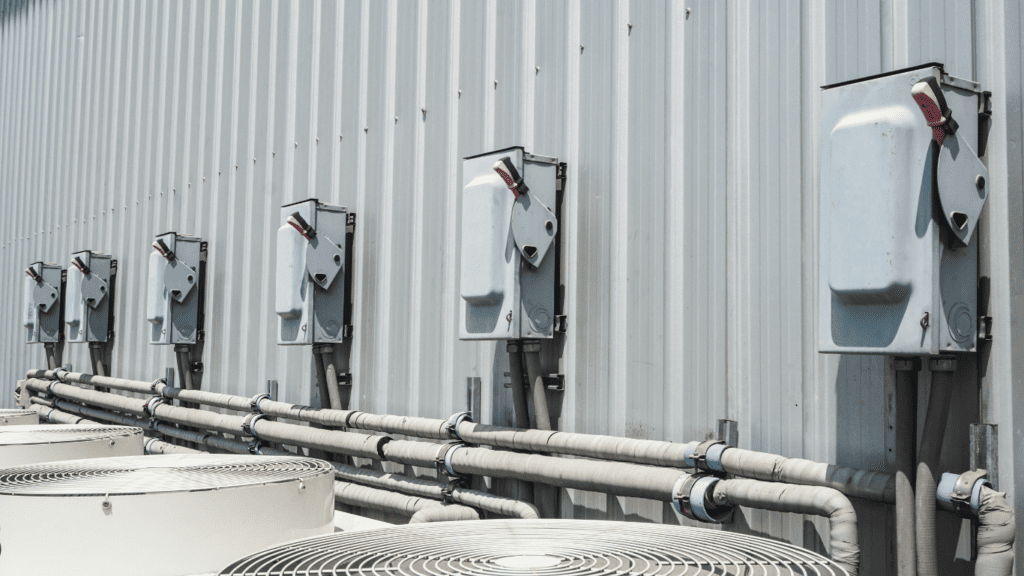What Is A Safety Disconnect Switch
In today’s fast-paced industrial and commercial environments, safety disconnect switches have become indispensable components for ensuring electrical safety. These devices allow operators to quickly and securely isolate power to machinery and other electrical systems, reducing risks during repairs, maintenance, or emergencies. With the right safety disconnect switch in place, businesses can prevent accidents, protect equipment, and comply with safety standards. Let’s explore how these switches can play a pivotal role in creating a safer workplace.
What is a Safety Disconnect Switch?
A safety disconnect switch is an essential component of electrical systems, designed to cut off power supply to equipment when it’s time to perform maintenance or address an emergency. By isolating power, disconnect switches provide a secure environment for electrical work, shielding personnel from electric shocks and reducing the chance of electrical overloads.
There are different types of disconnect switches suited for various applications, including:
- Fused disconnect switches: Provide overload protection by incorporating fuses that break the circuit in case of excessive current.
- Non-fused disconnect switches: Lack internal fuses but still offer a safe way to cut off power to machinery. These are often chosen when overcurrent protection is handled elsewhere in the system.
Choosing between these types largely depends on the specific safety needs and electrical setup of a facility.

Key Benefits of Safety Disconnect Switches
Enhanced Safety for Maintenance and Repairs
When maintenance or repairs are needed, disconnecting machinery from its power source is critical. A safety disconnect switch offers a quick way to ensure that all energy sources are safely shut off before work begins, minimizing the risk of electrical accidents. This not only protects personnel but also prevents potential damage to the equipment.
Protection Against Electrical Hazards
Electrical hazards, including shock and fire risks, are reduced when safety disconnect switches are used effectively. They prevent unexpected startup of equipment, which can cause accidents if someone is working on or near the machinery. For high-powered systems, disconnect switches also help in managing overcurrent, which could otherwise damage equipment or create dangerous situations.
Compliance with Electrical Codes and Standards
Installing a safety disconnect switch helps companies comply with the National Electrical Code (NEC) and Occupational Safety and Health Administration (OSHA) standards. These regulations require that specific types of equipment be isolated from power during service, helping businesses avoid legal complications and maintain a safe environment.
Choosing the Right Safety Disconnect Switch
Selecting the proper disconnect switch involves considering several factors to ensure safety and performance. Here are a few tips:
- Determine Voltage and Current Requirements: Choose a switch rated to handle the specific voltage and current demands of your equipment.
- Consider the Environment: Outdoor environments may require a weatherproof disconnect switch, while indoor setups might not.
- Understand Load Types: Choose a disconnect switch that can manage the load requirements of your system, whether it’s for high-powered industrial machinery or smaller equipment.
Consulting with a professional can help ensure that your chosen switch meets the demands of your application and adheres to code requirements.
Best Practices for Using Safety Disconnect Switches
- Regular Inspections and Maintenance: Just as with any other critical equipment, regular inspection of safety disconnect switches is essential. Routine checks help ensure that switches are in good working condition and can reliably cut off power when needed.
- Proper Training for Personnel: Proper training is crucial for anyone operating a safety disconnect switch. Employees should understand how to safely activate and deactivate switches and be trained to recognize potential issues. By educating staff on correct usage, businesses can further enhance workplace safety and avoid accidents related to improper handling.
Why a Safety Disconnect Switch is Non-Negotiable
Investing in the right safety disconnect switch and following best practices for use and maintenance can make a significant difference in workplace safety. Whether it’s for routine maintenance, unexpected repairs, or emergencies, disconnect switches are vital for ensuring that equipment remains isolated from power sources, providing a safer environment for all. To safeguard your operations, consult with experts on selecting and installing the right switch for your needs, and commit to regular training and maintenance.
By prioritizing safety with a safety disconnect switch, you’re not only protecting your employees but also securing your investment in machinery and equipment. Choose safety first and make electrical disconnects an integral part of your safety strategy.